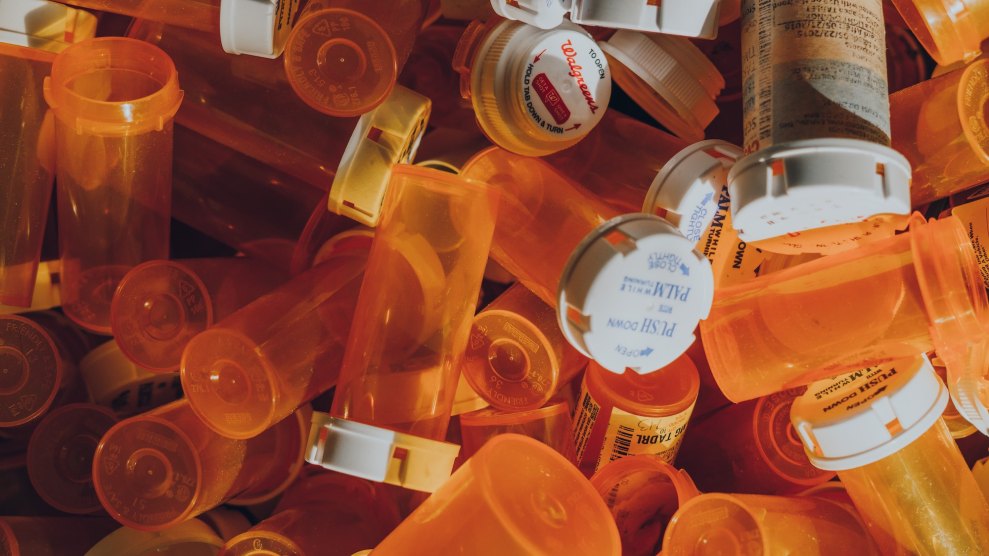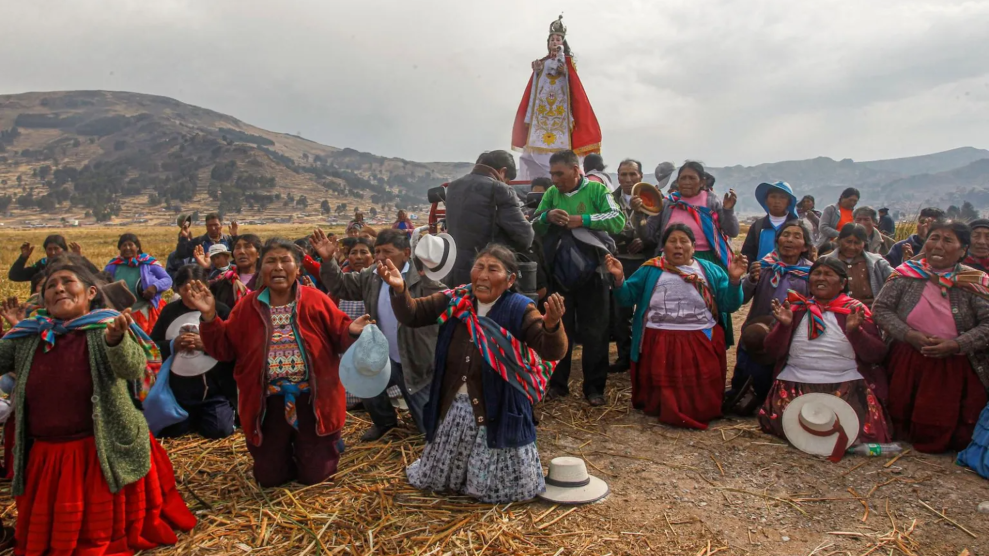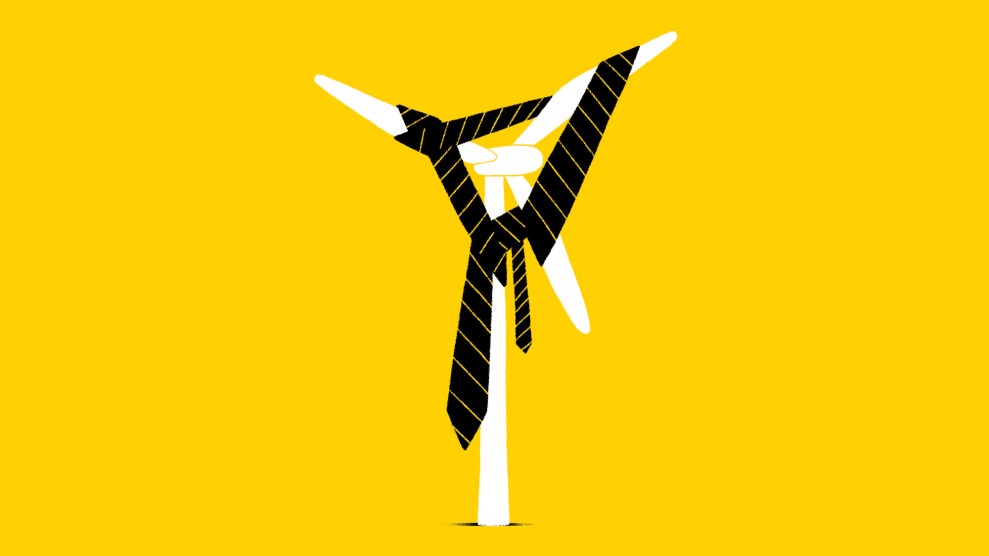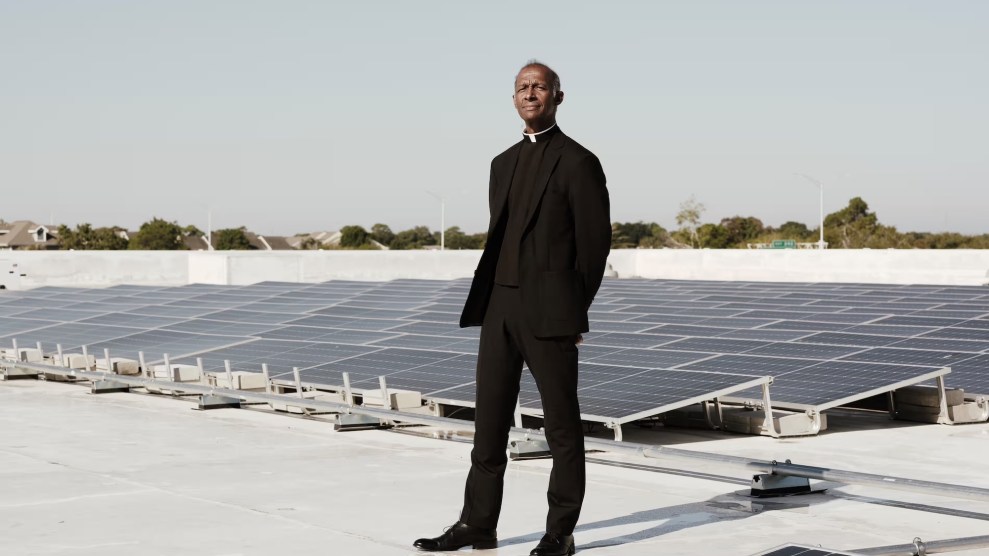
Pastor Antoine BarriereGiancarlo D’Agostaro/The Guardian
This story was originally published by the Guardian and is reproduced here as part of the Climate Desk collaboration.
Like many community-based solutions, the community lighthouse network in New Orleans can be traced back to a crisis moment when people realized that something had to change and they—not elected officials—would have to make it happen.
“For [Hurricane] Ida we were ready with showers, mattresses, shelter and food, but once again the electricity was out so we couldn’t serve our community,” said Antoine Barriere, a 61-year-old pastor. “The power was the missing piece.
“We realized that we had to stop waiting for a fix and do it ourselves. We need to get off the grid and be self-sufficient, as with climate change we’re going to get more disasters.”
In late August 2021, several faith leaders were on a Zoom call during yet another citywide blackout which left vulnerable residents struggling to cope with extreme heat and humidity. The power lines had been knocked out by Hurricane Ida, a category 4 Atlantic storm that had made landfall on 29 August, exactly 16 years after Hurricane Katrina.
Ida left some parts of New Orleans in the dark for 10 days and overwhelmed the city’s emergency response efforts. But a couple of months earlier a new network had been launched called Together New Orleans, which included churches, mosques, synagogues, unions, and environmental nonprofits whose leaders are working across historical racial and religious divides to build collective political power and challenge longstanding anti-sustainable pro-business policies.
The fix, they decided, would be the community lighthouse network, solar-powered disaster response hubs that could transform the city’s approach to resilience for climate and other natural disasters.
On a bright, balmy autumn morning a couple of weeks ago Barriere climbed a long, steep ladder to show me the 460 solar panels that now cover a third or so of his church’s flat roof.
The solar panels were generating more than enough energy to power Household of Faith, a non-denominational megachurch with 4,000 mostly Black parishioners in New Orleans East. Downstairs, a cabinet was stacked with backup batteries that were fully charged in case of a power outage—a frequent occurrence thanks to the low-lying city’s vulnerability to hurricanes, thunderstorms, high winds, extreme heat and flooding.
In a worst-case scenario—no sun, thundery dark skies and power outage—the backup batteries could power essential appliances for a couple of days including the water heater, five commercial fridge freezers storing perishables for the weekly food pantry, and air conditioning for the vast main hall which could be converted into a dormitory-style shelter.
But on this brilliant cloudless morning, most of the solar-generated energy was going into the city’s electric grid. New Orleans’ one-for-one net metering scheme allows the church to offset its excess clean energy against the utility’s dirty energy, and this should become a net zero facility within 12 months.
Household of Faith is among seven, and so far the largest, community lighthouse, but TNO has ambitions to build dozens more and is working with sister networks statewide.
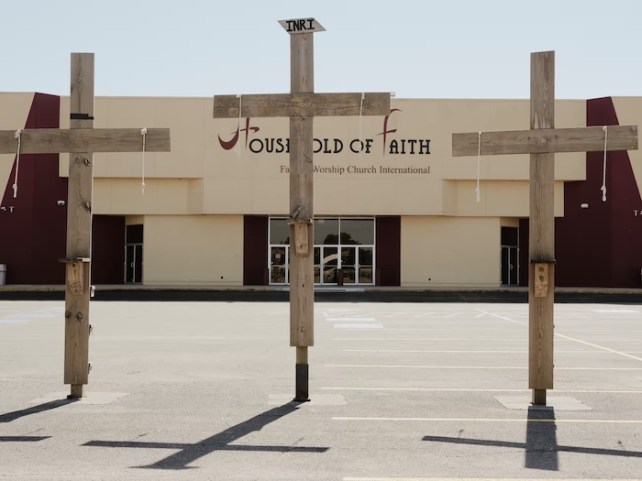
Household of Faith, a non-denominational mega church, is one of seven community lighthouses in New Orleans.
Giancarlo D’Agostaro/The Guardian
The idea is that each community lighthouse should be an institution locals already know and trust—such as a place of worship, health clinic or community center—that can be converted into a resilience hub where people can converge during a power outage to get cool, recharge phones, have a meal, connect to a medical device or store medication that requires refrigeration such as insulin.
In addition, community lighthouses will be able to keep the services running that people rely on such as the food pantry and religious sermons, while also adding capacity to the city’s wider emergency-response efforts as a distribution hub, shelter and possibly even house a makeshift clinic.
A couple of weeks before my visit, a run-of-the-mill storm took out some power lines, causing an outage during the church’s weekly bible study class.
“We just kept going, the power just switched to the batteries,” said Barriere. “The grid is going to keep going down while the sun will always come up. And even when it’s cloudy, we’re still generating some—and saving money.”
It was the first time the system was tested for real, outside a disaster simulation exercise, and while it was only a couple of hours, people were relieved to see that it worked.
At bible study that night was the 68-year-old parishioner Linda Thomas, who spends most of her day attached to an oxygen tank due to chronic lung damage caused by an autoimmune disease. She is mobile but frail, while her husband takes intravenous medication for congestive heart failure which must be kept refrigerated. They managed to stay at home after Ida, using a small generator and portable oxygen tanks until the power was restored on their street on the fourth day. But any longer, and they would have had to evacuate.
Thomas said: “Moving in an emergency is very stressful and hard physically, so it’s absolutely great that our church has solar because there is no place like home.”
Economically, it works too. Household of Faith’s electricity bill, after taking into account maintenance and insurance costs and the monthly solar service charge to pay TNO back for the upfront material and installation, is expected to drop by 20-30 percent, according to Pierre Moses, the project’s technical expert.
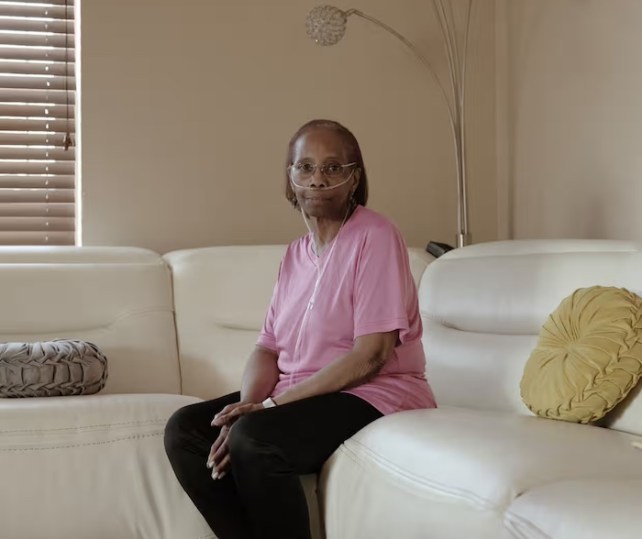
Linda Thomas, a member of the Household of Faith in New Orleans, who uses an oxygen tank due to chronic lung damage.
Giancarlo D’Agostaro/The Guardian
The city faces power outages that are not just triggered by storms such as Ida, and it’s much worse for low-income neighborhoods where local people are mainly Black, Latin and Asian. On top of this, the climate crisis is exacerbating other extreme weather events such as record-breaking heat and humidity.
Residents agree that it is a matter of when the next major hurricane strikes, not if.
“We need to be up and running by the next hurricane season,” said Sonya Norsworthy, the Household of Faith community lighthouse coordinator.
The next step is to recruit and train volunteers and begin mapping the vulnerable residents within a mile-and-a-half radius of the lighthouse. Volunteers will contact them before an incoming storm or tornado, and then again within 24 hours of an outage, as part of the project’s post-disaster response plan.
The end goal is to build a lighthouse within 15 minutes walking distance of all 375,000 city residents—and hundreds more across the state. They are hopeful about the next wave after recently helping the state win a $259 million in federal grant to improve grid resilience.
“After Ida hit, there was an overwhelming frustration and feeling powerless,” said Abel Thompson, a TNO organiser. “That’s when people switched from asking when will they [solve this] to why not us? And we can solve this.”
